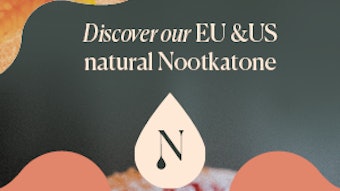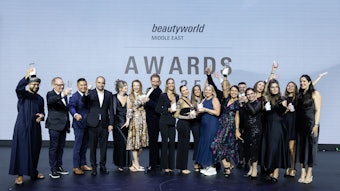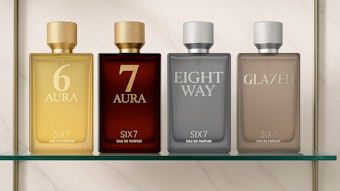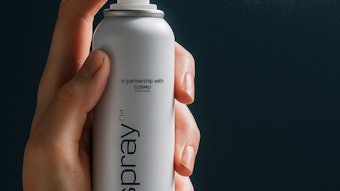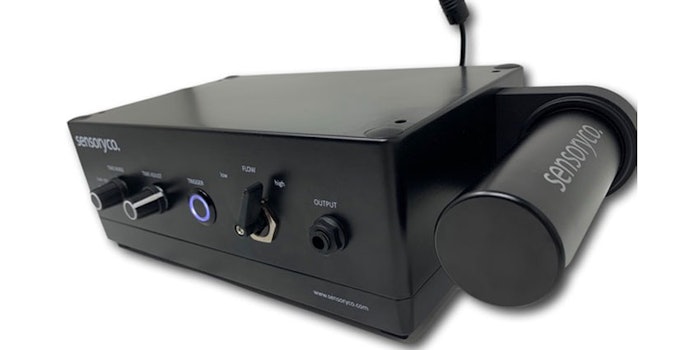
The SmX-M offers a self-contained scent generator that delivers aromas through small format tubing to target areas up to 10 feet away.
Following the announcement of SensoryCo.'s new scent generator technology (the SmX-M Scent Generator), Perfumer & Flavorist+ connected with the company's president and CEO Bryan Roe to discuss the company's inception, scent formation process and much more.
Related: SensoryCo. Releases Scent Generator Technology
![Perfumer & Flavorist+ [P&F+]: What was the inspiration/mission behind the technology?](https://img.perfumerflavorist.com/files/base/allured/all/image/2021/10/gci.bryanroe.png?auto=format%2Ccompress&fit=max&q=70&w=400) Perfumer & Flavorist+ [P&F+]: What was the inspiration/mission behind the technology?
Perfumer & Flavorist+ [P&F+]: What was the inspiration/mission behind the technology?SensoryCo is an independent spinoff of Koolfog, a pioneer in the “fog" industry. Not many people know that fog systems even exist but they are used in a variety of industry applications from greenhouse environmental control to wood storage humidification to restaurant cooling. One of the unique markets that Koolfog caters to is the theming and entertainment industry where fog systems are used for special effects in experiential spaces. It was during this time that we identified a gap in the market. There didn’t seem to be technologies specifically geared to allow for scent experiences in these types of creative spaces, where a high level of control and delivery methods are required.
P&F+: How long did it take from inception to production? Could you please touch on SencoryCo Scenting Systems? How does the technology work in regards to scent experiences?
Our first scent delivery platform, the SmX1, was targeted to training & simulation, where odors and malodors are deployed in live and simulated training environments. We developed the SmX1 in under a year and made sure to include features and a flight case-type form factor that would stand up to the rigors of military and first responder training.
Our first scent delivery platform, the SmX1, was targeted to training & simulation, where odors and malodors are deployed in live and simulated training environments. We developed the SmX1 in under a year and made sure to include features and a flight case-type form factor that would stand up to the rigors of military and first responder training.
The primary objective of the SmX1 is to insert ambient scents into small spaces. In military and first responder environments, this may mean mock villages, tunnels, clandestine drug labs or medical tents. These often include very unique scents like simulated mustard gas, diesel, blood, or even burning flesh. Trainers may place scent delivery each training day on/off with a remote device or they are permanently placed in each space and triggered through actions like stepping on a pressure plate or opening a door.
Our most recent scent delivery platform is the SmX-M, a system that is geared for a more interactive, close-up experience. For example, scent integrated within an interactive museum exhibit or inside a flight simulator where the participants are in close proximity. The SmX-M takes a different approach to scent delivery. Instead of pushing scent into an ambient space, scents are delivered in shorter bursts and travel through small tubing to participants while the unit is tucked away. The SmX-M is meant to be integrated to controls. For example, a museum visitor might push a button, trip a sensor or be immersed in an audiovisual experience managed by A/V controls. We made it straightforward to integrate and adjust the timing and output of the scents. The SmX-M was in development for over a year and was recently launched in late Q3 2021.
P&F+: Regarding the scent formation process, are you working with a number of fragrance houses to recreate aromas? What does that process look like?
Most of our customers are looking to create experiences that are more “real." They already have thematic props or training props, video, audio or sound effects—even actors. However, to complete the experience they need to fill the "negative space”. They use scents to make the environment smell more like a chemical spill or an urban battlefield, or a far-away travel destination, or inside a helicopter or on a fictional prehistoric island.
To recreate aromas we lean on specialty fragrance houses to help us create unique scents to add to our library. These are often aromas that are driven by a specific project but generally needed by a subset of our clients. We begin this process by describing the aromas in a variety of ways, building a scent narrative in the process. We also look for examples if possible.
Obviously we aren’t able to provide samples of chemical weapons or certain environmental attributes like rain so we often have to build a narrative using input from stakeholders and industry experts. We look to the perfumers for expertise on how to pull it off and generally move through a process that includes revisions and small tweaks along the way. When we feel we are almost there we distribute samples to the stakeholders for additional feedback. We rarely get 100% buy-in on anything but are looking for an aroma that is generally in the ballpark with a positive response from the majority of the stakeholders.
I have to be honest, there are some aromas that we have had to give up on but it is usually a time constraint more than the fact that it is an impossibility. It is for this reason that we don’t accept custom requests unless we know we have a very generous time frame for proper research and multiple feedback loops.
P&F+: What does the future look like for SensoryCo Scenting Systems? Any plans to expand scent experiences or integrate new systems?
In my opinion, SensoryCo has a bright future. We are in the very early stages of awareness when it comes to interactive scent experiences and it has taken us years to use experience and feedback to fine-tune our technology so that we can cover different scent experiences based on the demands of unique environments, interactions and conditions. Our plan is to continue to develop the technology while we seek out increasingly “real” aromas to complete the experience.
Want to know everything going on in flavor & fragrance? Sign up for P&F+'s newsletter. You can also follow along on Instagram and LinkedIn.
